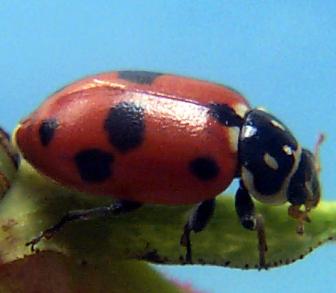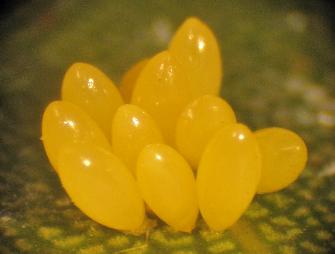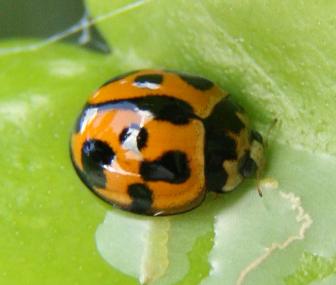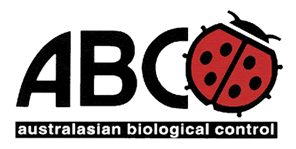Ladybirds
Various species
Aphid predators
|
 |
 |
|
Target Pests
|
Adults and larvae feed on wide range of aphids
but also feed on mites, moths eggs and small larvae.
|
 |
 |

|
Crops suitable
|
Field and orchard crops, vegetable and protected crops.
|
 |
 |
Description
|
Beetles are a very large and diverse insect group. Beetles have two pairs of wings, a rigid often coloured pair of fore wings and a pair of fine hind wings folded beneath.
They are distinct from bugs in that they undergo complete metamorphosis - egg, larval, pupal and adult stages.
Most beetles are predators but some feed on plants, most notably - the 28 spotted ladybird, Carpophilus and Monolepta beetles.
|
 |
 |
 |
 |
 |
 |
 |
| |
Labybird adults are typically small, round to oval and domed shaped with distinctive colourful markings.
A female may lay from 200 to 1,000 eggs over two months. The eggs, spindle shaped are usually deposited in clusters.
Larvae are alligator like with three pairs of prominent legs and can be voracious feeders.
Pupa may be dark or colourfully pattered..
|
 |
 |

|
 |
 |
 |
 |
 |
How to use
|
Hippodamia are sold as eggs on tape. Attach sections of the tape to plants where aphids are present. Larvae will soon hatch and hunt down the aphids. If food source is good, ladybird larvae will pupate on leaves.
Hippodamia eggs are placed where aphid infestations occur in this way its not necessary to release over the whole crop.
|
 |
 |

|
Suppliers
|
Not mass reared at present
|
 |
 |
 |
Other biocontrol agents commonly used with Aphidius:
|
|
 |
 |

|









